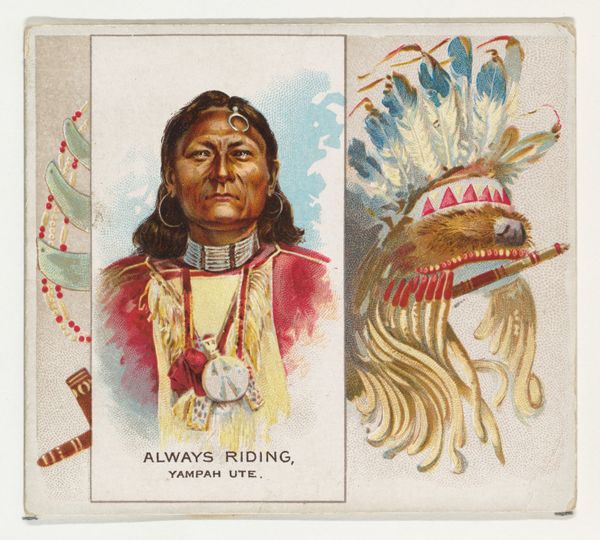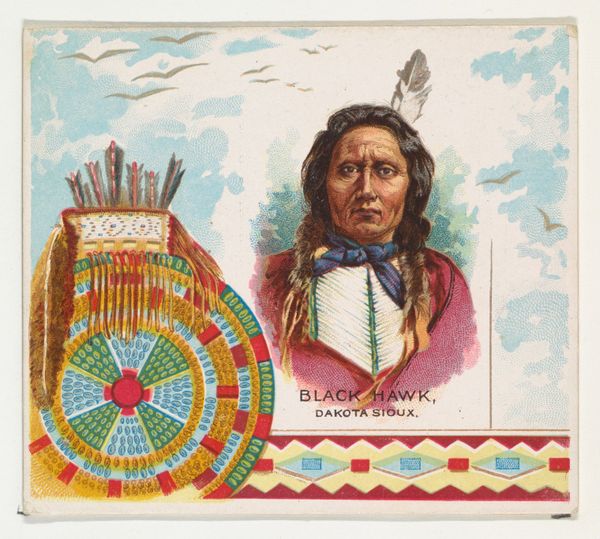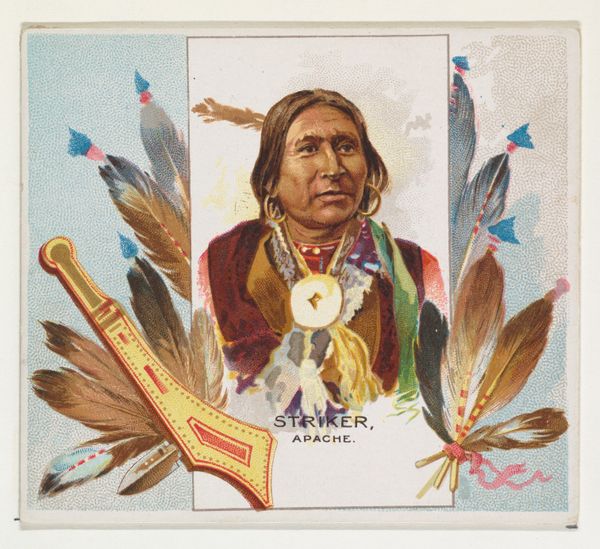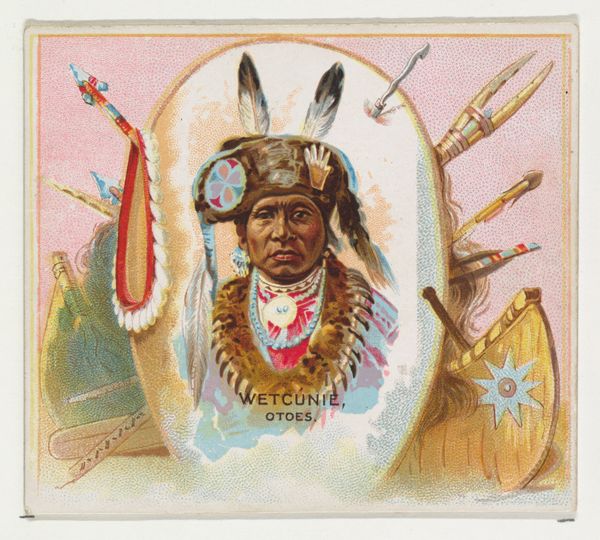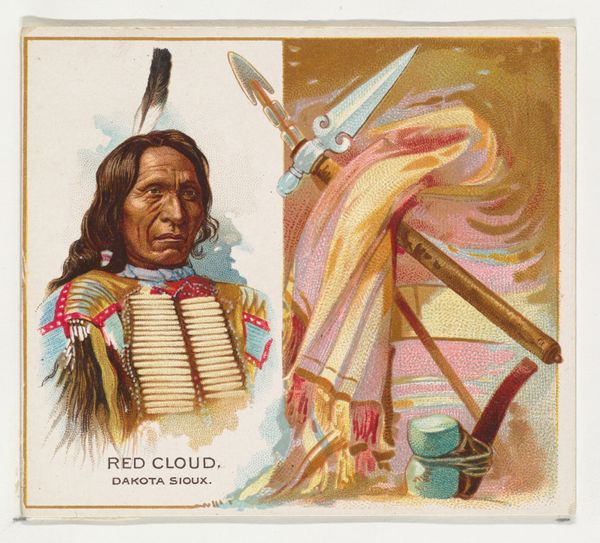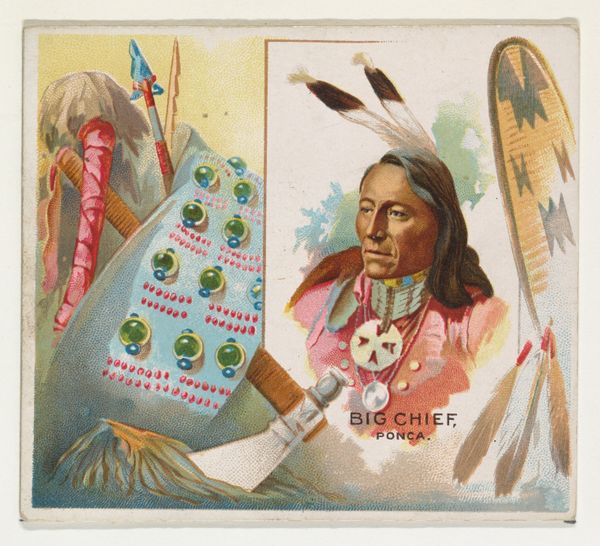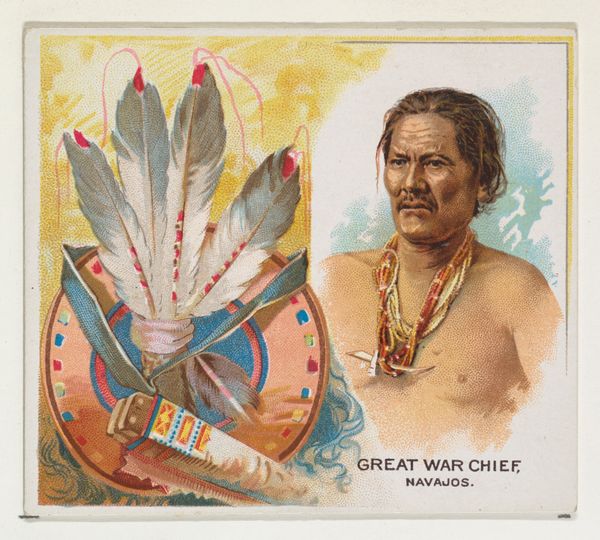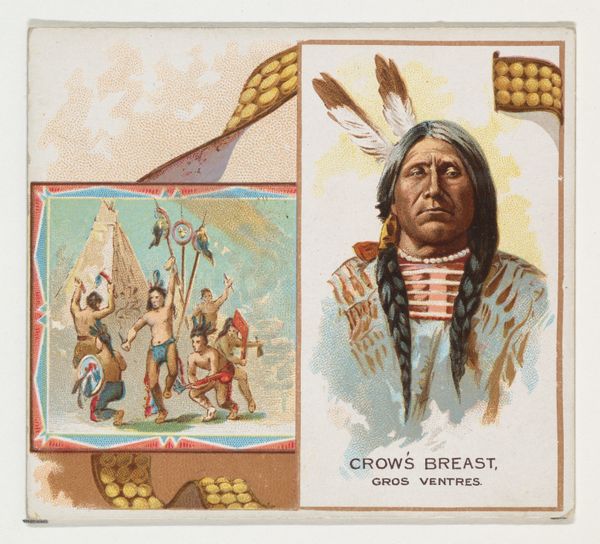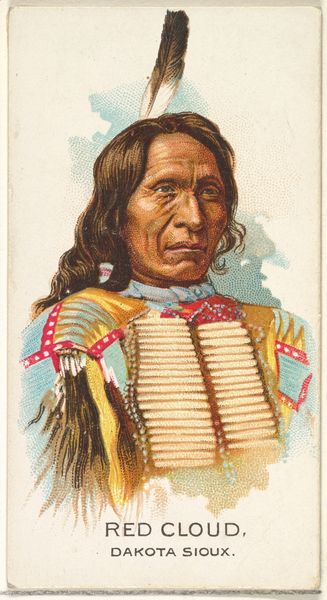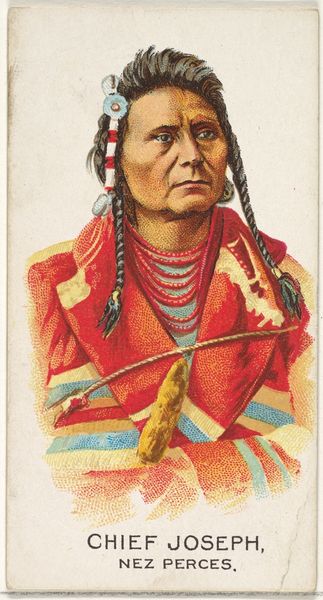
Iron Bull, Crow, from the American Indian Chiefs series (N36) for Allen & Ginter Cigarettes 1888
0:00
0:00
Dimensions: Sheet: 2 7/8 x 3 1/4 in. (7.3 x 8.3 cm)
Copyright: Public Domain
Editor: This vibrant print, “Iron Bull, Crow,” from 1888 by Allen & Ginter, seems quite small and was originally issued as a cigarette card! The details are incredible; the colors almost give it the look of Ukiyo-e. It is fascinating, though there is a strange dissonance in how this striking indigenous personage became a product. How do you read this? Curator: It’s critical to remember the historical context. These cards were a marketing tool, reflecting and perpetuating popular, often romanticized, notions about Native Americans. Allen & Ginter aimed to appeal to a wide audience, and depicting figures like Iron Bull was partly a means of exoticizing and, frankly, commodifying indigeneity for consumer consumption. Does it strike you as celebratory? Respectful? Or something else? Editor: Definitely complicated. On one hand, the artist clearly put in effort to capture the details of Iron Bull's regalia, yet packaging this image with a product like cigarettes feels disrespectful now, a reduction of a person and a culture. Curator: Precisely. The “American Indian Chiefs” series appeared when federal policies were directly attacking Indigenous sovereignty and cultural practices, the same period that saw boarding schools intending to forcefully assimilate children. Placing Iron Bull's image on a cigarette card also performed symbolic domination. How did displaying and circulating this imagery help shape broader societal views? Editor: It seems that displaying the imagery in this way reinforced the idea of indigenous people as a vanishing race and objects of curiosity instead of respecting contemporary living communities. Curator: Absolutely. We can consider how institutions, like the Metropolitan Museum, now acquire and display such objects. The ethics of representation, ownership, and the narratives we construct around these items become ever more crucial. Editor: So it's about continuously re-evaluating these pieces through a critical lens, acknowledging their complex past to ensure they are presented responsibly. Thank you, I feel like I’ve learned a lot! Curator: Indeed. Recognizing the role of popular imagery is just one way to confront the historical relationship between indigenous communities and Western commercial culture. There’s much more to explore.
Comments
No comments
Be the first to comment and join the conversation on the ultimate creative platform.

